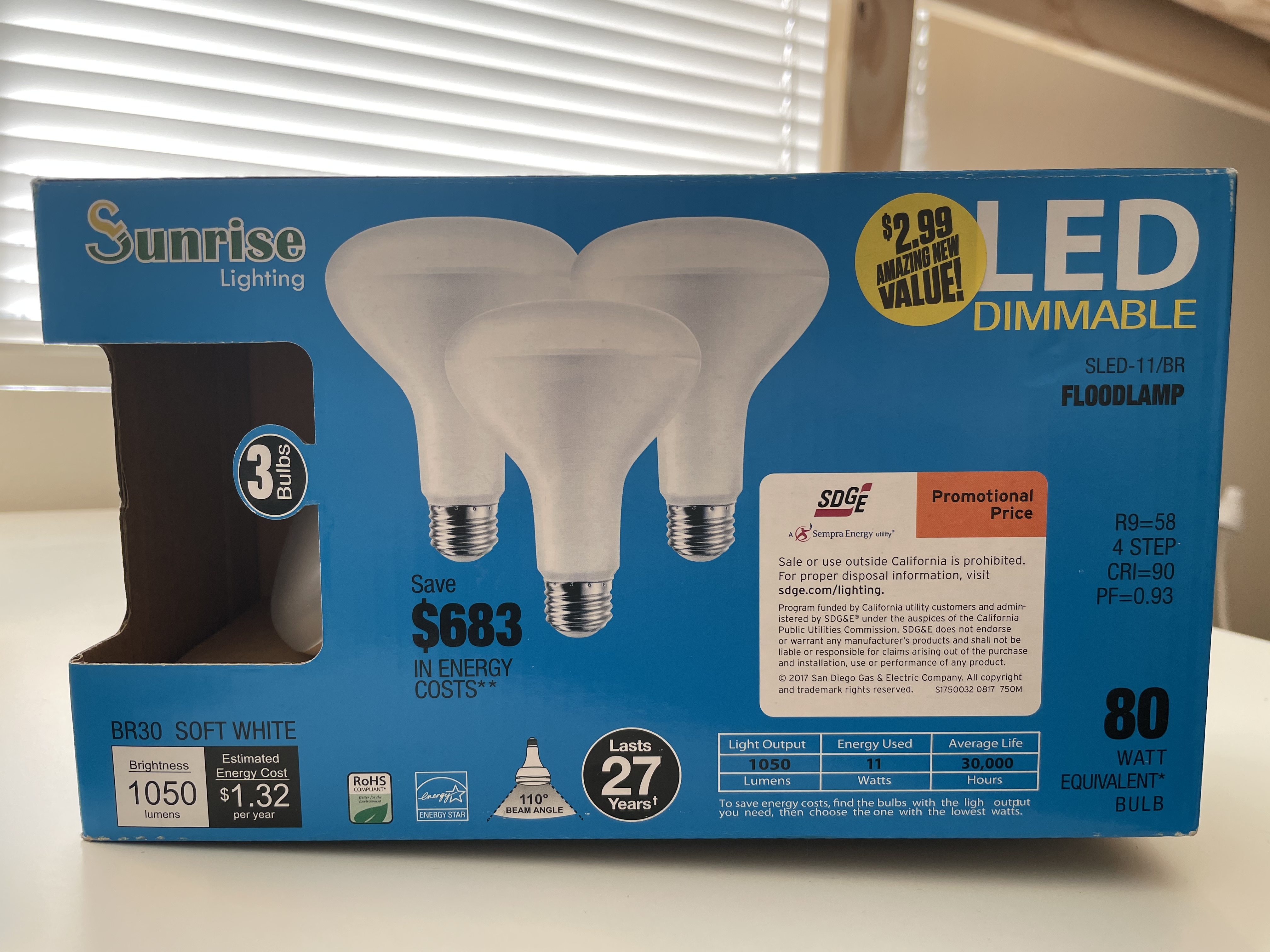LED lights work by converting electrons into photons. It uses far less energy than incandescent bulbs because it converts energy into light (rather than heat) far more efficiently. LED bulbs also last way longer.
The problem with LED lights for many people, is the upfront price. It requires an initial investment but will save the consumer a lot of money during its lifetime in terms of energy costs and replacement costs. I think an important next step for governing powers is to incentivize selecting more sustainable options through subsidies, for example. This will encourage sustainable innovation, and it will help consumers make better choices.
The EcoChallenge Drawdown site predicts that LED lamps will completely replace other lighting options by 2050. "10.2-10.8 GIGATONS of carbon dioxide emissions could be avoided in residences and 5.9-6.7 GIGATONS in commercial buildings." This is a huge reduction. It's an amazing benefit for such a small change to make.
Furthermore, LED lights are not made up of toxic chemicals. For example, the fluorescent alternative contains many toxic chemicals including PCB and mercury. Fluorescent lighting therefore requires special disposal. LED lights can avoid these problems and lead to better human health and climate health.
In my research, I discovered another interesting benefit to LED lights. Incandescent lights give off a warm-tone light, which gives off a lot of heat as well. This kind of lighting tends to make people feel cozy and tired. However! LED lights give off a cooler-tone light without the heat. People have found that using LED light has increased their productivity. Here's another reason for students to use LED lamps!
After doing the research, I decided to replace my light bulbs with LED ones, and it was actually amazingly affordable. It was only $2.99 for three light bulbs, and each of them apparently lasts 27 years. It's crazy to think that a package of three lightbulbs might last longer than my lifetime...


-
 Audrey Goodman 5/22/2021 4:14 PMHi Charlotte! I really enjoyed reading your response about changing light bulbs. LED lights are a great way to help the environment, as they use much less energy converting energy into light efficiently, as you discussed. I do think people tend to be hesitant at times purchasing LED lights, but I think with some research about the benefits of LED lights and the reduction in energy and replacement costs, many people have switched to LED lights. I thought your idea about incentivizing sustainable options through subsidies is a good suggestion in order to encourage people to make better, more sustainable choices. I was very interested to read about how LED lights give off a cooler-tone light than incandescent lights, which give off a warm-tone. Increased productivity is a really encouraging benefit to use these lights, as it always seems like there isn’t enough time in the day to get everything done, so if LED lights can help me be productive instead of making me tired, count me in!
Audrey Goodman 5/22/2021 4:14 PMHi Charlotte! I really enjoyed reading your response about changing light bulbs. LED lights are a great way to help the environment, as they use much less energy converting energy into light efficiently, as you discussed. I do think people tend to be hesitant at times purchasing LED lights, but I think with some research about the benefits of LED lights and the reduction in energy and replacement costs, many people have switched to LED lights. I thought your idea about incentivizing sustainable options through subsidies is a good suggestion in order to encourage people to make better, more sustainable choices. I was very interested to read about how LED lights give off a cooler-tone light than incandescent lights, which give off a warm-tone. Increased productivity is a really encouraging benefit to use these lights, as it always seems like there isn’t enough time in the day to get everything done, so if LED lights can help me be productive instead of making me tired, count me in!







